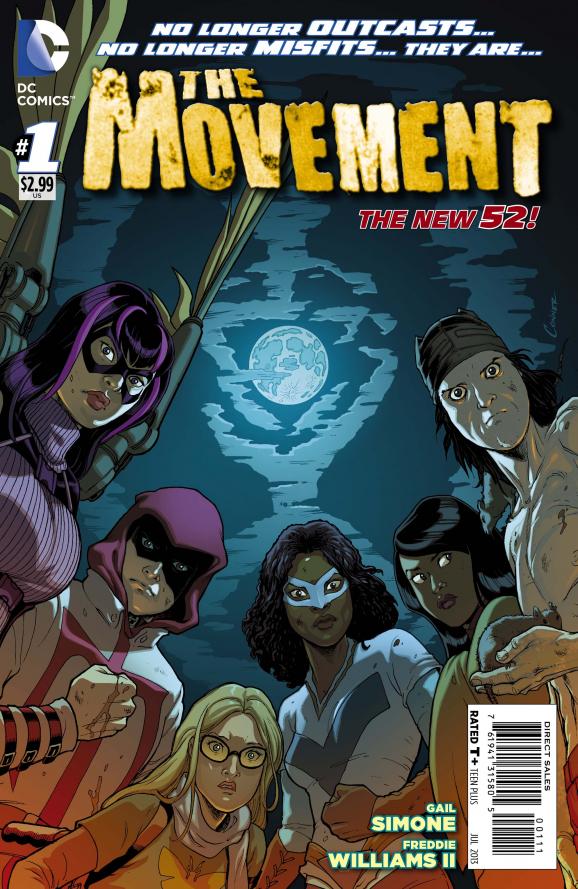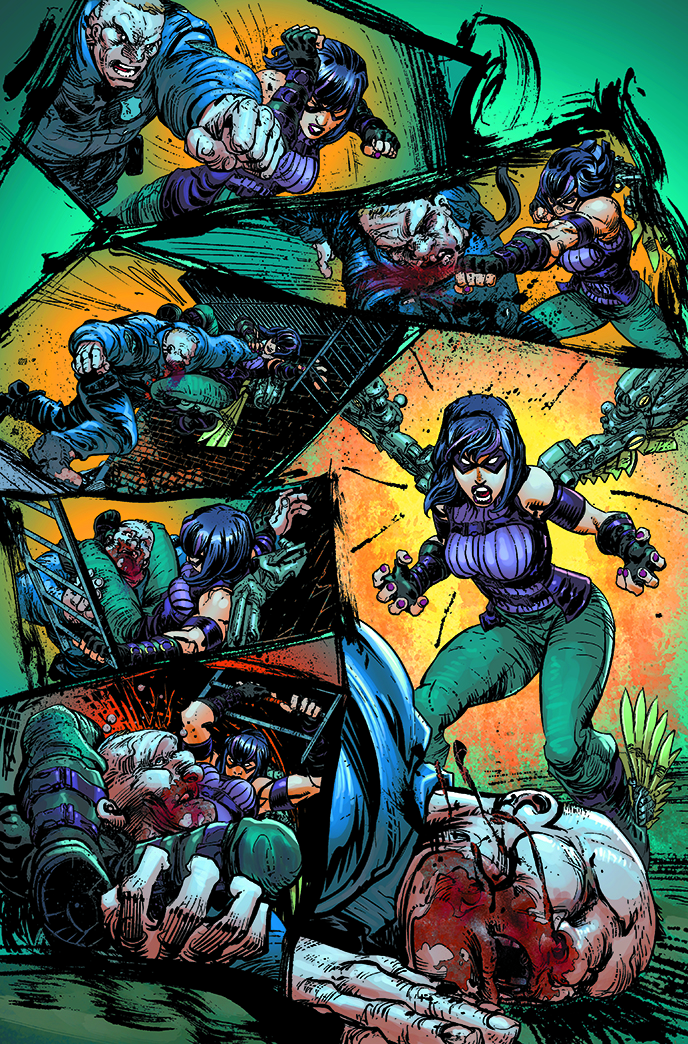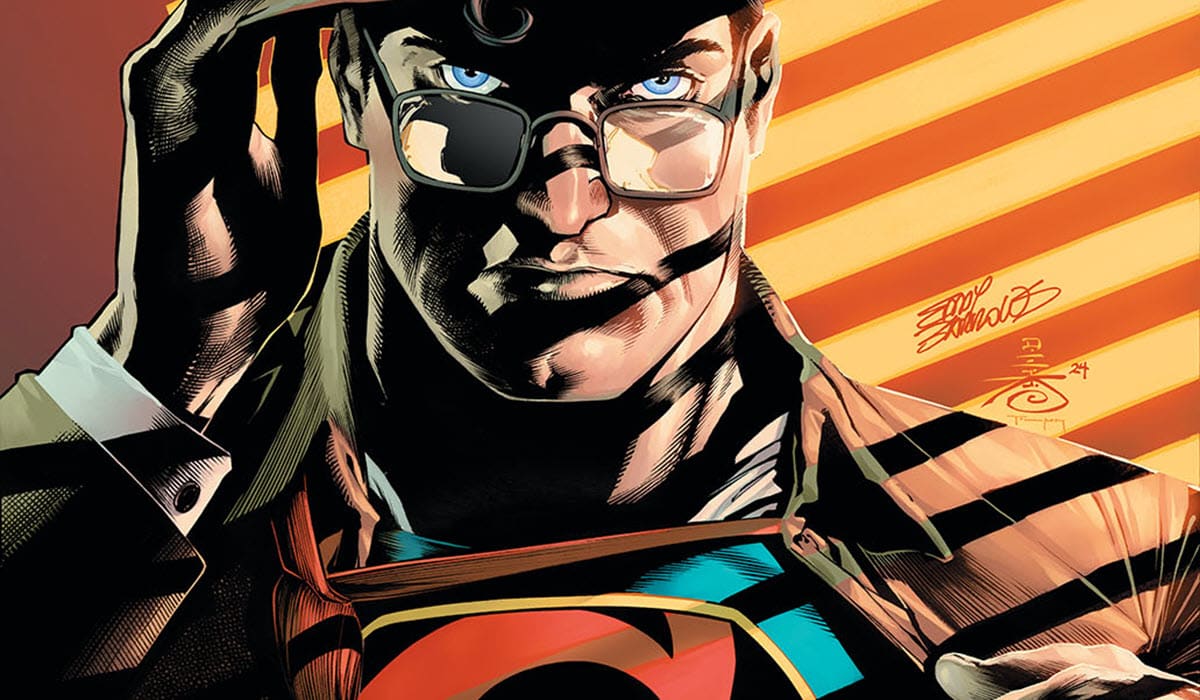DC’s new series, launched by Gail Simone and Freddie Williams II, is a really interesting idea for a series. Essentially pitting a somewhat corrupt and immoral police force against a group of young superhero vigilantes, it makes for a fairly uncompromised story, which offers the most overtly political work Simone has done so far in her DC career.
That’s actually fairly surprising, as well, as Simone is known for her political nature and interest in social prejudices — but this feels like one of the first times we’ve really got to see her directly address those ideas in her comics. The Movement’s first issue asks quite a few questions, is challenging and provocative, and seems like a highly promising ongoing storyline. And whilst it does sometimes soar wildly over the top, it retains shape and offers a distinctly different take on the DC Universe, and superheroes in general.
The idea here is that we follow the Police Chief of Coral City, a city where many of the officers are corrupt and several serial killers at on the loose. While trying to track down this killed, the Chief is hampered at every step by red tape, dodgy colleagues, and bad luck. At the same time, a new force is rising up against crime in the city, in the shape of ‘The Movement’, who record their actions and share it online. They’re basically a superpowered version of Anonymous, who offer a form of social justice for the community.
And, in a climate where people on Reddit can track down criminals and Anonymous seem able to shut down any website they like, that’s quite a topical idea for the series to be handling. The script doesn’t overheat this idea, luckily, with a story which touches on social media and contemporary issues without being dazzled by them. They serve a function in the story, but the story is more focused on creating a narrative than aiming for cheap controversy. We’re given a solid sense of location and function in this issue, fleshing out this area of Coral City and the focus characters.
The focus characters, as I’ve found in most of Simone’s work, are well-characterised, and given intricate and smart motivations. The background characters tend to be very broad and cliched – the two corrupt cops who appear at the start, for example. You can predict what they’re going to do from the very first moment they appear, because they’re plot elements rather than actual characters. The Movement themselves each get maybe a page each to show themselves off, and their personalities are sketched broadly. They use their powers, show a bit of personality, and then vanish. I presume we’ll see more from them in future issues, but here they’re shown as antagonists rather than the primary focus.
You’ll notice that I’m not referring to them as superheroes. That’s because the book makes a strong case that the group are also a liability to themselves. My politics, personally, are that I know a few police officers, and they’re all lovely people. So the sight of seeing The Movement assault a group of police officers – who are trying to do their job for the most part – is jarring. Simone’s script doesn’t shy away from the idea that The Movement are reckless and prone to misjudgements just like everybody else, and that their campaign may well be a massively damaging mistake. They discriminate against all police officers equally, even though not all the ones in Coral City are corrupt. The Movement are as big a problem as the corrupt law officers they fight.
Freddie Williams II has had an interesting career at DC, with his art seeming to change depending on the project. His work in Seven Soldiers looks totally different to his work here, with his art slowly coming to take on a rather strong Neal Adams influence. His storytelling has grown in strength as well, with the mix between fight scenes playing out well. The character designs are distinct enough to be interesting, although we’ll need more characterisation from them as the series continues – they’re currently a little vague.
His work as artist is thoroughly gritty and unpolished – colourist Chris Sotomayer goes for grime over glamour every time, to brilliant effect. Rather than trying to make the characters stand out against a realist background, Sotomayor makes the characters look unexceptional and part of the scenery – emphasising the idea that they are a guerilla group fighting on the fringes, rather than a bunch of sparkly Superman-types.
Simone’s script jumps perspective a few times, leaving the central police chief character in order to develop a few other characters around the edges. Williams handles these shifts nicely, in order to ensure that the final page leaves a strong enough mark for readers. The final page is a solid cliffhanger which offers readers everything they could need to know about the series going forward, and makes a convincing pitch for why they should continue reading. I think this is one of the strongest launches from DC in quite some time – it’s provocative and interesting, and what excites me most is that both sides of the argument will have fans. We’re given vigilante justice and corrupted law enforcement, and allowed to choose which of the two flawed ideas we most empathise with.
The important thing for The Movement is that it’ll be able to continue this idea as the series goes along. There’s only going to be so many mean things you can do to the police before they stop being sympathetic and become pathetic, so I’m going to be very interested to see how the creative team handle this story going forward. Based solely on this first issue, it looks like DC’s willingness to experiment has paid creative dividends once more.










I thought the first issue was terrific, but it makes me sad to see the DC label and copyright on it. The series doesn’t seem to owe anything to the DC Universe and I would much rather have seen it published at a company where Simone and Williams would retain ownership.
Or maybe Simone and Williams liked the fact that they got a paycheck for doing this seies instead of wondering if all they’d see for their work was… Well, nothing they could pay bills with as there’s no guarantee that it would do well enough elsewhere to make a profit.
Though it’s very easy to imagine this as a creator-owned series, perhaps there’s something to be said for using the DC machine to get this into as many as hands as possible. It could probably do well if it was published through an independent company, but the mere fact that it’s being supported by a big corporation could be a statement and story its own right.
I find it terribly interesting that we still don’t know how much DC (or Marvel) pays its writers, artists and so forth. I’m assuming it’s enough that going freelance is not an appealing option for folks like Simone. Oh they may do an occasional project outside of the DC and Marvel circles but they certainly aren’t willing to leave the lifestyle afforded by steady paychecks!
It’s probably worth pointing out that Simone and Williams *are* freelance. This is a job they’re doing for DC, but they’re not employees. DC is their client.
All of which says nothing about the actual comic, which very nearly met my extremely high expectations, and I’m sure it will only improve as the characters get more space to grow. I found it very interesting that the police captain is the central figure in the story so far, emphasizing the Movement’s scariness and power, but also painting what are ostensibly the protagonists in a less flattering light than if one of them had been the viewpoint character. That’s a deliberate choice, and a surprising one. I can’t wait to see how the book will surprise me next.
Comments are closed.